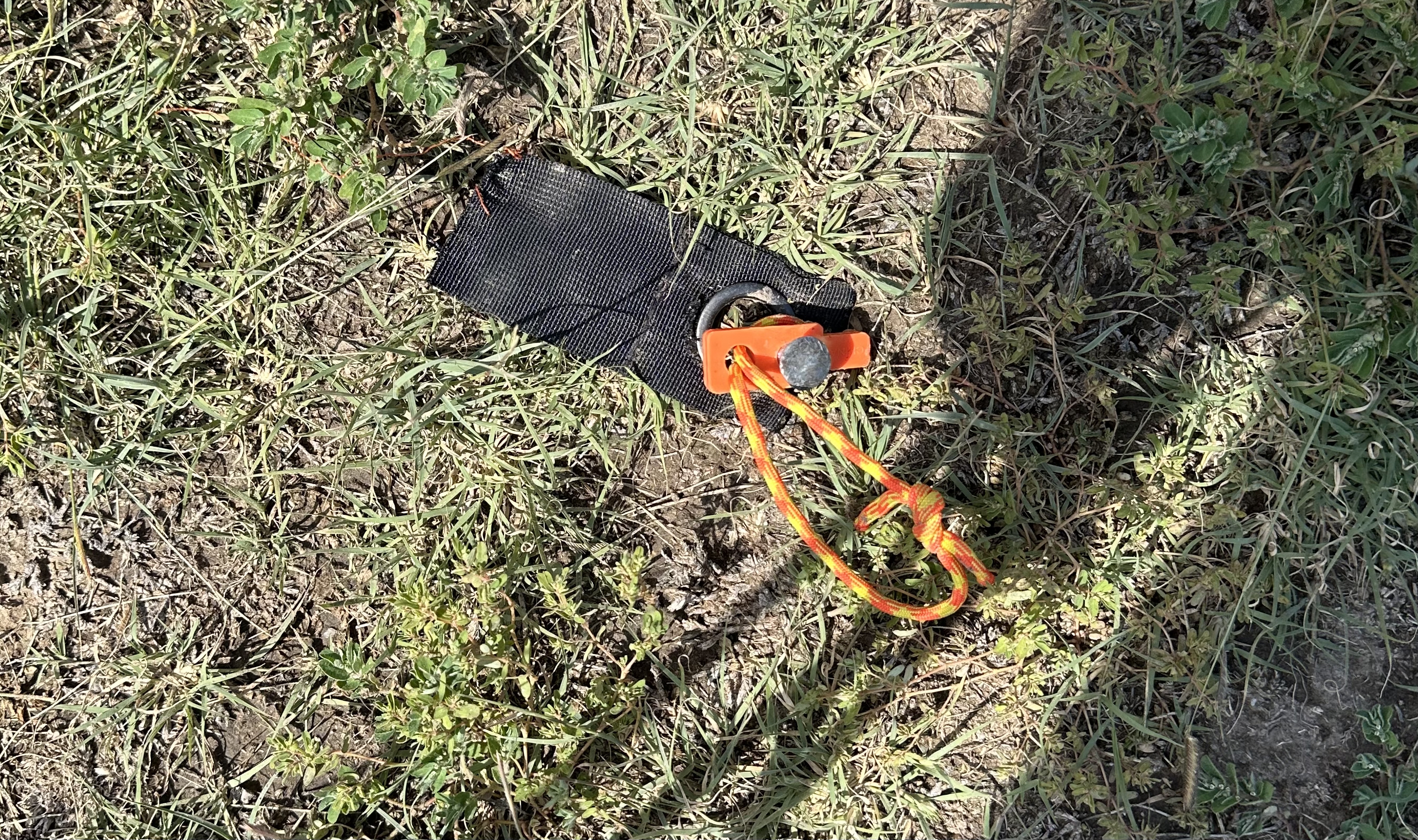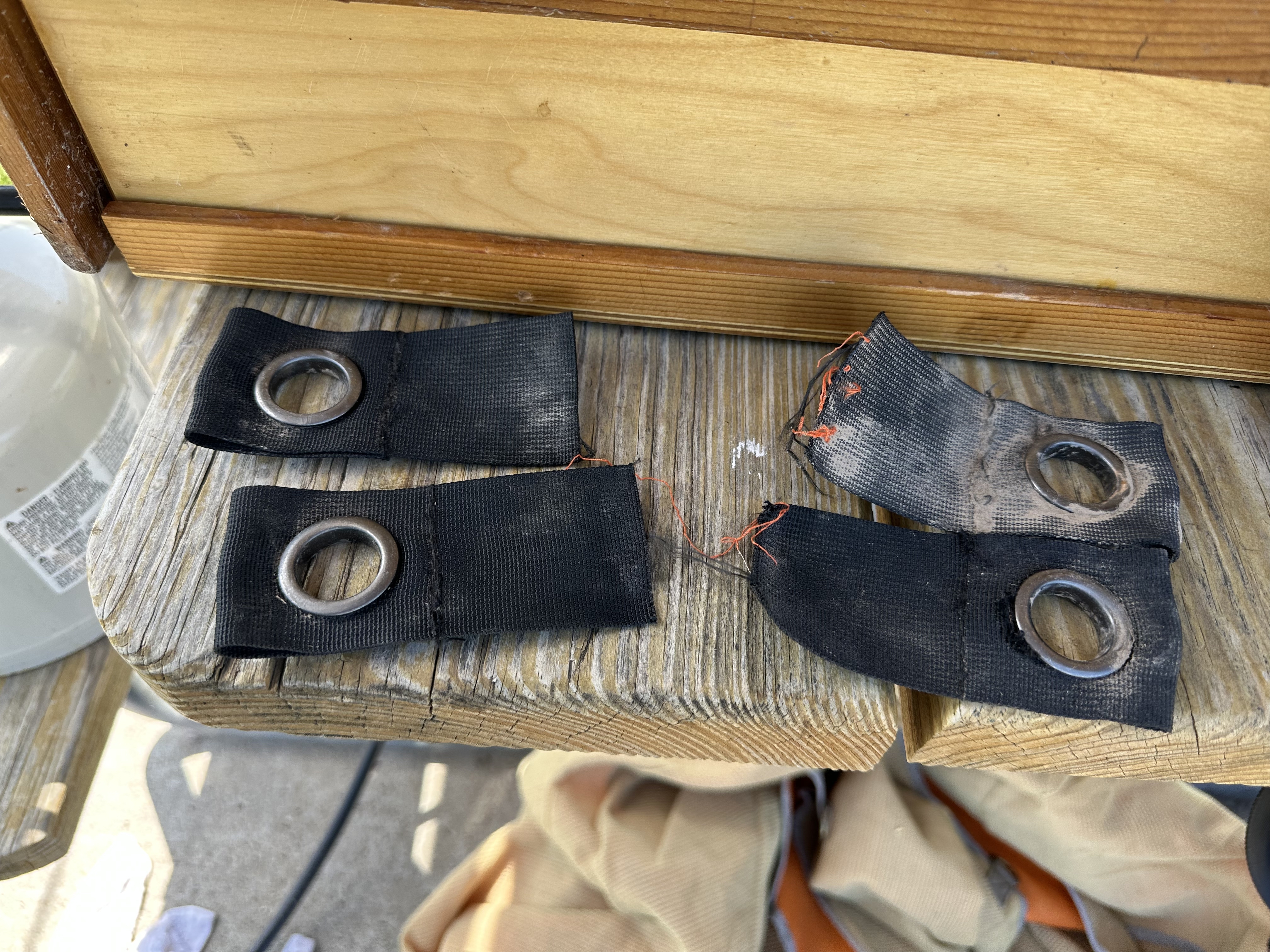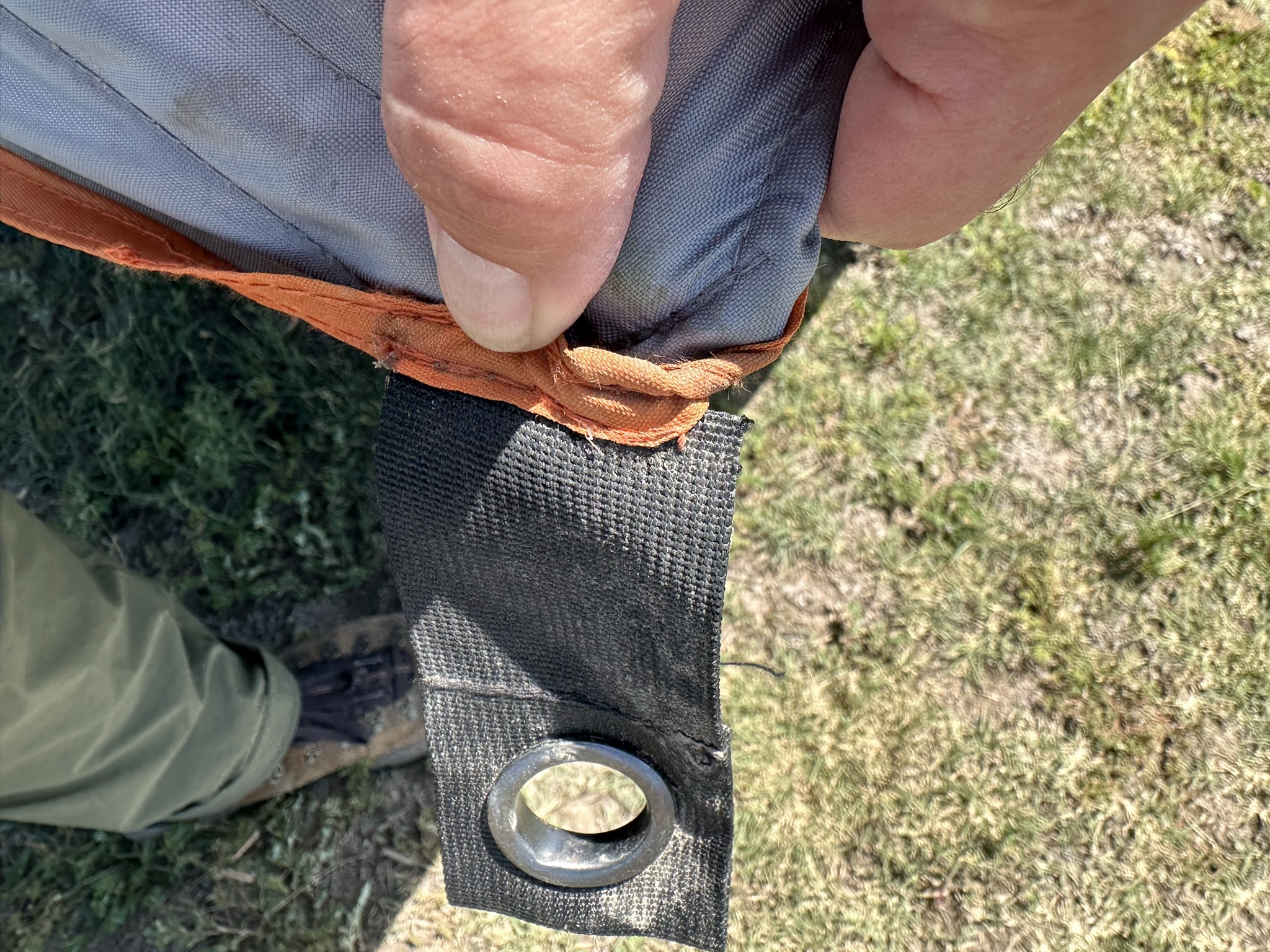We bought the T8 tent to take on a 2-week road trip out west. We’ve owned a T4 & a Clam which have worked well for us, and wanted something with the same features only bigger. Namely very fast setup, windows off the ground, and enough pockets.
While the tent is nominally the same in terms of features, the design did not scale well and it has not proven to be good value for us.

There was a thunderstorm while we were camped in the badlands and it had its way with this tent.
The storm started with rain, and then the wind picked up rapidly. The rain was no problem, and I wasn’t concerned about the wind at first because plastic tents are loud by nature and tend to make weather sound much worse than it is.
First the hubs started popping back in. I’d staked out the two hubs that were facing the wind because there was a stiff breeze earlier in the day. I know from experience with the Clam and T4 that the hubs will pop back in if the wind gets strong enough. I didn’t stake all of them and as the wind increased it blew in the side hubs, including one that had been staked, and blew down the roof hubs, which required all 5 of us to hold the sides out and the roofs up. This made it difficult to go out and fix the fly that was making a lot of noise and clearly needed attention.
The fly attaches with two short elastic sections, four short poles at the corners, and then there are two elastic cord tie-outs on each of the large side flaps. The fly is the Achilles heel of the tent.
The elastic cord tie-outs on the side flaps are not enough, and I’d planned to replace them with paracord. So once the kids calmed down enough I got out and started replacing the elastics with paracord, but that didn’t help much. There’s just too much flappy fabric, and looking back I’d have been better off rolling them up.
The elastic straps that hold the fly on at the ends broke, in one case the hook broke, and in the other the entire strap was gone. Amazingly, so was the eyelet, which had nothing attached to it. The elastic straps failing, combined with the roof hub collapsing, allowed the wind to get under the fly and soon it was gone and that was game over because now rain was pouring into the tent. We gathered everything that couldn’t be dried out later and bailed to the cars and ultimately a hotel.
The next morning we came back, and this was the result:

Four of the 6 stake tabs detached.


This is not surprising given they’re held on with just a single line of stitching along a hem, instead of being a bit longer and being stitched to the heavy webbing just inside of the hem.

One of the ends where there used to be a short strap to hold the fly on, and an eyelet, both now gone. The hook on the other end of the fly broke.

The four short poles that hold the corners of the fly popped off when the roof collapsed, and once out were whipping around and damaged the tent, we noticed this later at another campground.

One of the metal ferrules on the end of the fly poles also broke, and another came off but we found it later. We could fit the fiberglass pole into the socket without the ferrule but only until the fiberglass pole started to fray at the end during a later setup.
I sewed the stake tabs back on using a Speedy Stitcher, careful to sew into meatier material, and we used paracord to tie the fly at the ends from then on, and used paracord to tie the flaps down. As it happened, the next night was calm and the rest of the sites we camped at on the trip were much more protected and we got much luckier with the weather. Once the fiberglass poles started to fray and couldn’t be put into the socket to hold the fly on, we stopped using the tent altogether.
While the tent does set up very fast, and has lots of room and nice organizational features, I probably would not use it for a trip like this again. It’s just not made strongly enough and the design is too complicated and has too many flaws. In a local or very protected campground it is a convenient choice.
If I had to use this tent again in winds more than about 20mph or so, I would stake out all of the hubs, put poles under the roof hubs, and either roll the side flaps of the fly and stake the center tabs, or stake the flaps straight down somehow. Oh, and reattach the stake tabs to the heavier material that is very close by. At that point it’s going to look like Guliver tied down by the Lilliputians and be as much work & stakes as a Springbar or traditional dome tent with multiple poles, but with less space because of the interior poles holding up the roof. Since those poles will be the key to keeping the fly on, they’re not going to be optional.
We’ve contacted Gazelle about the issues and after supplying a serial number and proof of purchase are waiting to hear back from them.
Update: They responded that they do not consider storm damage to be a warrantable defect, but sent us a replacement rain fly.

